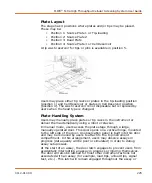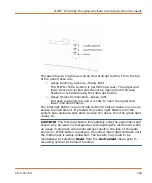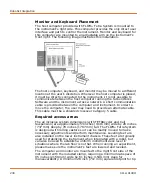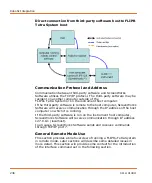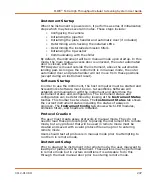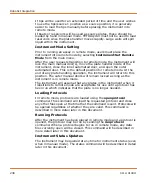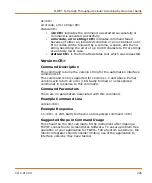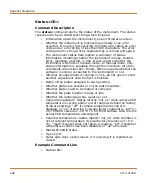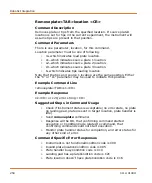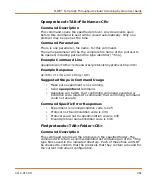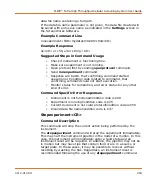
FLIPR
®
Tetra High Throughput Cellular Screening System User Guide
0112-0109 H
239
Plate Status tracking
The most important information in the status command is the status of
the plates in the instrument. From the status response, four possible
information items may be determined about the plates in each of the
four plate positions.
The first item that can be determined is the plate assigned to the plate
position for the protocol to be run. This will be the plate name assigned
in ScreenWorks Software for a particular plate type and assigned to
that position for the current protocol. This information could be used by
the robot to confirm that the correct plate type is delivered to the
required position. ScreenWorks Software and the FLIPR
®
Tetra System
instrument have no method to determine whether the plate delivered is
of the required type and they will always assume that the plate type
delivered is correct.
The status response also indicates whether a plate is present in each
possible location. This indication is a direct readout of the status of the
plate presence sensors in the instrument. This readout does not depend
on whether a plate is required in the position or if the plate present is
the correct plate.
The
REMOVEPLATES
line in the status signals that the plates in the
indicated positions have been completed. Plates become complete in
different ways. If the plates are source plates, ScreenWorks Software
will indicate that they are finished when an aspiration from the plate is
completed AND that aspiration is checked to show that the plate is
finished after the aspiration. For tip racks, they will be marked as
complete as soon as tips have been loaded or unloaded to/from them.
Read plates are marked as complete at the end of the last read in the
assay they are used in.
The
NEEDPLATES
line indicates plates that are needed for the assay in
progress to continue. The instrument will indicate that it needs a plate
if it gets to an operation that requires a plate in a particular location
and that location is either empty or contains a plate that was previously
marked as finished.
Bar Code Tracking
Bar codes can be tracked in an assay in two ways.
First, the bar code can be supplied to the software by the robot
controller when the robot controller instructs the ScreenWorks Software
to load a plate. The software will record the bar code values of the
plates delivered in the appropriate data file in which they are used.
Second, the instrument will attempt to read a bar code for all plates it
loads using the plate handler. If this value is not overridden by one
supplied by the robot controller, this bar code will be recorded in the
data file when the plate is used.
Regardless of the method used to deliver bar code information to the
instrument, all bar code information may not be present when an assay
Summary of Contents for FLIPR Tetra
Page 1: ...FLIPR Tetra High Throughput Cellular Screening System User Guide 0112 0109 H December 2011...
Page 12: ...Contents 12 0112 0109 H...
Page 16: ...System Overview 16 0112 0109 H...
Page 40: ...System Hardware Features 40 0112 0109 H...
Page 148: ...Exchanging Hardware 148 0112 0109 H...
Page 156: ...Calibration and Signal Test 156 0112 0109 H...
Page 196: ...Running an Experiment 196 0112 0109 H...
Page 232: ...Robotic Integration 232 0112 0109 H The following drawings illustrate these requirements...
Page 282: ...Data Processing Algorithms 282 0112 0109 H...
Page 294: ...Consumables and Accessories 294 0112 0109 H...
Page 298: ...Using AquaMax Sterilant 298 0112 0109 H...
Page 302: ...Electromagnetic Compatibility EMC 302 0112 0109 H...

